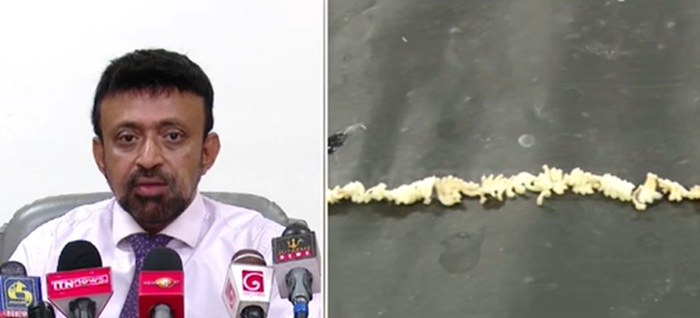
A 70 cm monkey tapeworm has been found in a 10-year-old boy in Kurunegala, with the Sri Lanka’s Medical Research Institute (MRI) confirming it to be the longest to be found globally.
Speaking to the media, MRI Director, Dr. Suranga Dolamulla, said previously the longest tapeworm to be found was around 40 cm in length.
“Research has found that this monkey tapeworm belongs to the Bertiella genus. It is commonly known as the Monkey tapeworm. Further investigations are underway to study the species of the tapeworm,” he added.
How do humans/ children get infected?
Also addressing the media, the Head of the Department of Parasitology and Consultant Virologist, Dr. Rohitha Muthugala, said that monkeys are typically the natural hosts of this tapeworm species.
Explaining how a human could get infected, he said that when monkey faeces contaminate the soil, mites can carry the tapeworm eggs, which may then infect the fruits and soil they come into contact with.
He further said that humans, especially children, could be infected by consuming the contaminated fruits or by coming into contact with the contaminated soil.
Dr. Rohitha Muthugala pointed out that this is common in areas with a high monkey population, such as Kurunegala and Anuradhapura.
What are the symptoms and preventive measures?
Dr. Rohitha Muthugala assured that this was not a serious illness, but was a troublesome situation for children.
He pointed out that the symptoms include stomach ache, diarrhoea, and fatigue as the worm is known to depend on the nutrients of the host.
He added that it could be spotted, as the tapeworm grows, segments of it break off and are excreted by the host.
As preventive measures, Dr. Rohitha Muthugala advised the public to thoroughly wash fruits, especially those found on the ground, before consumption.
He further said that children must wash their hands properly prior to eating, while children playing on the ground must have trimmed, short nails to prevent the contaminated soil from remaining in their fingers, which could result in an infection. (Newswire)
